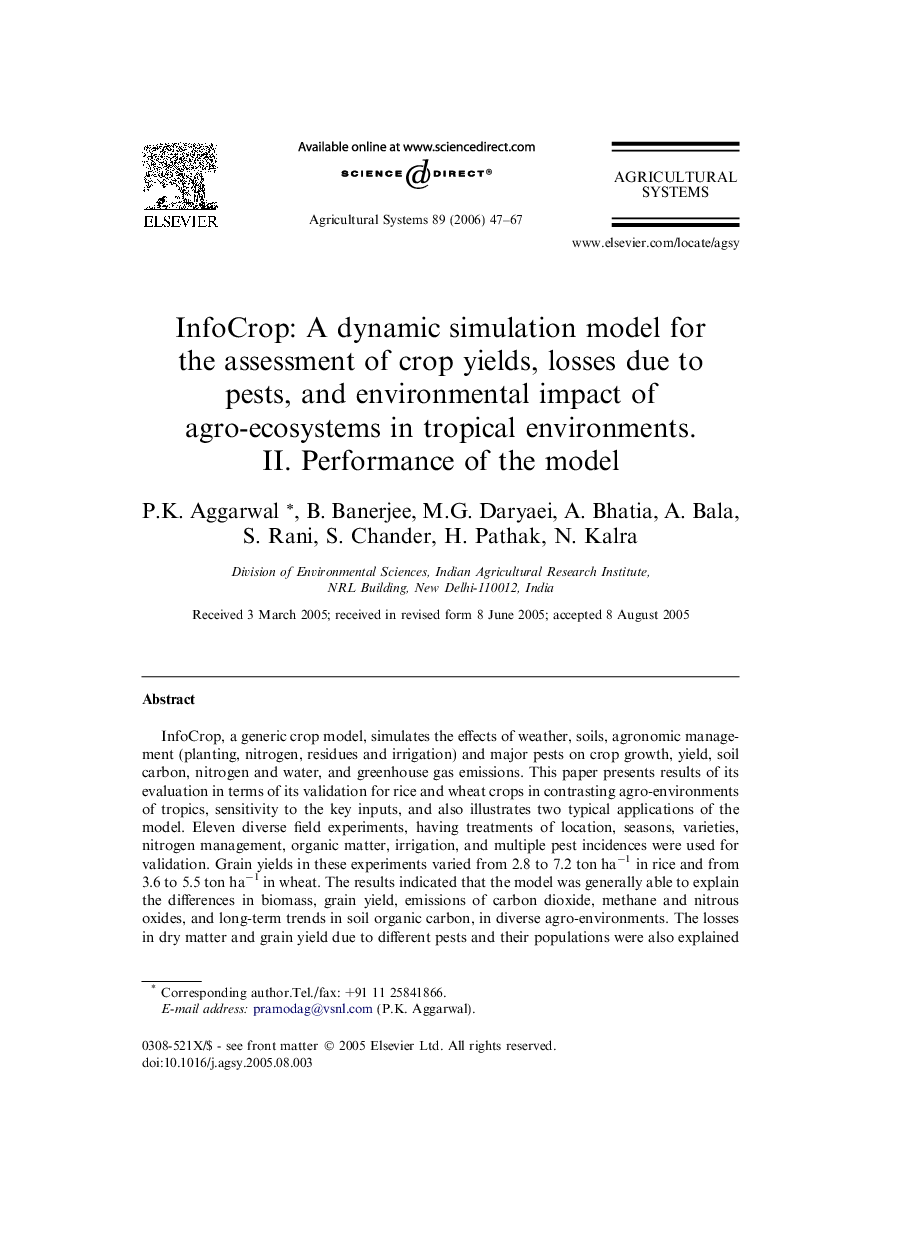| Article ID | Journal | Published Year | Pages | File Type |
|---|---|---|---|---|
| 4492047 | Agricultural Systems | 2006 | 21 Pages |
InfoCrop, a generic crop model, simulates the effects of weather, soils, agronomic management (planting, nitrogen, residues and irrigation) and major pests on crop growth, yield, soil carbon, nitrogen and water, and greenhouse gas emissions. This paper presents results of its evaluation in terms of its validation for rice and wheat crops in contrasting agro-environments of tropics, sensitivity to the key inputs, and also illustrates two typical applications of the model. Eleven diverse field experiments, having treatments of location, seasons, varieties, nitrogen management, organic matter, irrigation, and multiple pest incidences were used for validation. Grain yields in these experiments varied from 2.8 to 7.2 ton ha−1 in rice and from 3.6 to 5.5 ton ha−1 in wheat. The results indicated that the model was generally able to explain the differences in biomass, grain yield, emissions of carbon dioxide, methane and nitrous oxides, and long-term trends in soil organic carbon, in diverse agro-environments. The losses in dry matter and grain yield due to different pests and their populations were also explained satisfactorily. There were some discrepancies in the simulated emission of these gases during first few days after sowing/transplanting possibly because of the absence of tillage effects in the model. The sensitivity of the model to change in ambient temperature, crop duration and pest incidence was similar to the available field knowledge. The application of the model to quantify multiple pests damage through iso-loss curves is demonstrated. Another application illustrated is the use of InfoCrop for analyzing the trade-offs between increasing crop production, agronomic management strategies, and their global warming potential.
